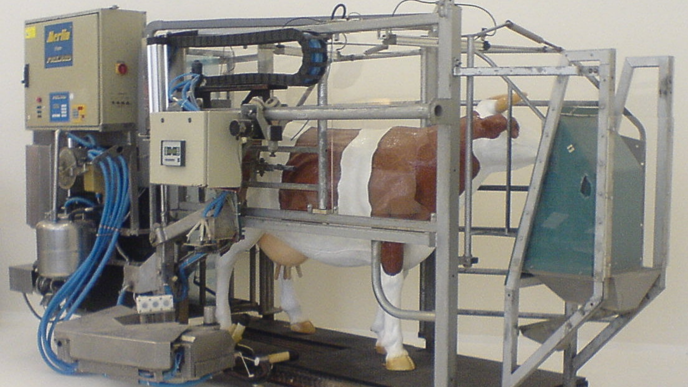
Mastitis treatment strategies in a sustainable dairy production
Project overview
Participants
Short summary
This three year long project aims to study and evaluate current strategies for treatment of clinical and subclinical mastitis in Swedish dairy herds with automatic milking, and their effects on animal health.
The long-term goal is to improve mastitis management and reduce the impact of mastitis in Swedish dairy herds with automatic milking.
The project focuses on mastitis which is the most common and most costly disease in Swedish dairy cows. It is important to increase our knowledge about mastitis and mastitis treatments as it can lead to better animal welfare, animal protection and food quality, a reduction in antibiotic use and improved economics for dairy producers. In this project, we want to study and evaluate strategies for treating mastitis in dairy herds with automatic milking, whether these strategies differ between different types of herds and what effect they have on the health of the cows. We also want to find out how, and to what extent, information from the automatic milking system is used to make decisions about cows with mastitis.
The plan of the project
- A survey study to investigate how decisions are made about cows with mastitis, and how information from the robot is used. We also want to know if there are underlying factors that influence these decisions, such as the farmer's/animal husbandry's general perception of mastitis and udder health. The relationship between strategies and animal health data from the Cow Control will be investigated. The survey will be sent out to Växa-affiliated herds with robotic milking.
- In the second part of the project, we want to look at how cows recover from treated mastitis, by combining Cow Control Data (Växa Sverige) with data from the automatic milking system for about three years. To assess healing, indicators are used that are measured and recorded and stored every time the cow is milked in the milking robot, as well as information about sample milkings and cullings. In this way, the entire course of the disease can be followed, from when the milk starts to change to when the milk has returned to normal. We will investigate which factors affect the time for recovery and return to full milk production to find out whether some cows have a better ability to handle morbidity, which is called resilience.
- In addition, two to five herds (with robot and cell counter) will be followed for a full year in a pilot study where we want to map the occurrence of subclinical mastitis and dry cow treatments. Cell count measurements will then be taken daily on all cows in the herd and we will look at which cows have high cell counts, which ones heal spontaneously and which ones are dry cow treatment treated (as well as how effective that treatment is). We will also look at how the information from the robot is used to make decisions about dry cow reatments.
Publication of project results and schedule
Data collection begins in 2021 and lasts for approximately 1 year. The results will then be compiled and analyzed. The goal is to publish research results in scientific journals, and also to reach out to Swedish dairy farmers through industry magazines, social media and at conferences and meetings aimed at both farmers, advisors and veterinarians. The project is expected to be completed in September 2023.
Active communication with research participants
This project aims to improve the profitability and competitiveness of Swedish dairy farmers, as well as to increase animal welfare in Swedish dairy herds. In addition to the goals mentioned above, in this project we want to be responsive to requests from farmers and others who may be interested in the results of the study. Among other things, an introductory workshop was held before the final planning of the project where we received input on the project's structure from various professional groups and organizations such as veterinarians, farmers and advisors. When the project is completed, similar participants will be invited to a final workshop where we discuss how to move forward after the project ends and how the results can best be used for Swedish dairy production.